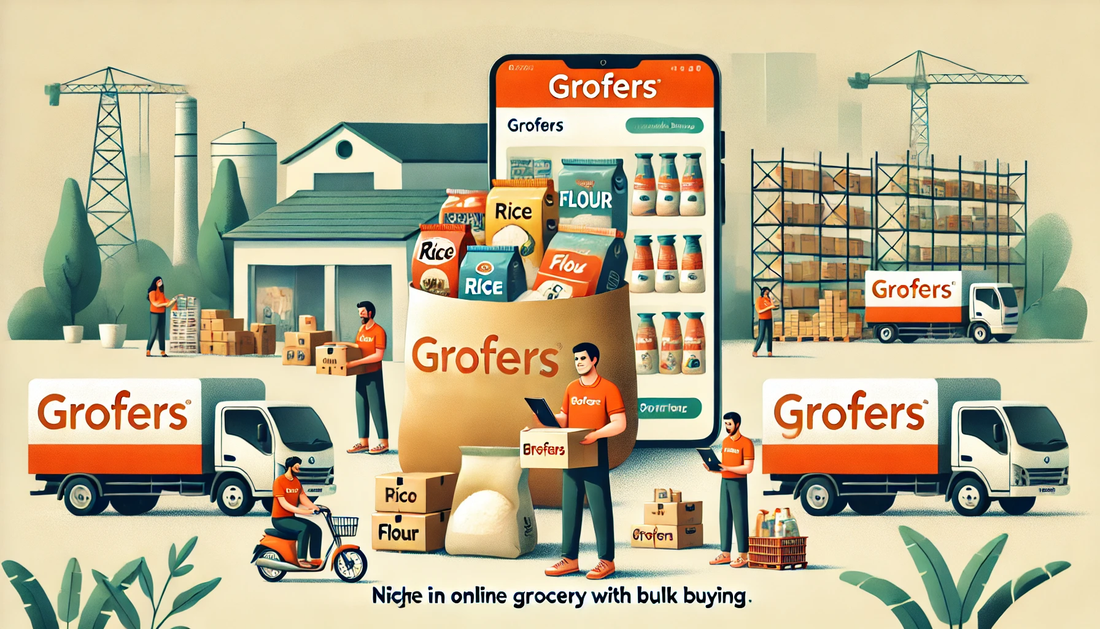In the bustling online grocery market, Grofers has carved out a unique niche by focusing on bulk buying. This strategic move has not only set Grofers apart from competitors but has also catered to the evolving needs of consumers.
This blog explores how Grofers built its brand around bulk buying and offers actionable takeaways for startups aiming to replicate such success.
The Foundation of Grofers
Founded in 2013, Grofers started as a hyperlocal grocery delivery service. Its founders recognized the potential for online grocery shopping, especially in urban areas where consumers sought convenience.
By focusing on bulk buying, Grofers addressed a significant gap in the market, allowing customers to save money and time.
Key Strategies Behind Grofers’ Success
Grofers' success can be attributed to several strategic initiatives that startups can learn from:
1. Emphasis on Bulk Buying
Grofers allows customers to purchase groceries in bulk, often at discounted prices. This model attracts budget-conscious consumers and those seeking convenience. Startups should consider how bulk buying can enhance their value proposition.
2. Strong Supplier Relationships
By establishing strong relationships with suppliers, Grofers secures competitive pricing and ensures a steady supply of products. Startups can benefit from nurturing supplier relationships to enhance product availability and pricing strategies.
3. User-Friendly App Interface
Grofers offers a user-friendly app that simplifies the shopping experience. Customers can easily browse products, compare prices, and place orders. Startups should prioritize user experience in their platforms to drive customer satisfaction and loyalty.
4. Targeting Price-Sensitive Consumers
By focusing on bulk buying and competitive pricing, Grofers targets price-sensitive consumers who appreciate value. Startups should identify their target audience and tailor their offerings to meet specific needs.
5. Streamlined Logistics
Grofers has optimized its logistics to ensure quick deliveries, even for bulk orders. This efficiency is crucial in the grocery market, where freshness matters. Startups should invest in logistics to enhance delivery speed and customer satisfaction.
6. Data-Driven Decision Making
Grofers uses data analytics to track customer behavior and preferences, enabling them to offer personalized recommendations. Startups should leverage data insights to inform product offerings and marketing strategies.
7. Marketing and Branding
Grofers employs targeted marketing campaigns to attract customers. By highlighting their bulk buying model and cost savings, they effectively communicate their value proposition.
Startups should develop clear messaging that resonates with their target audience.
8. Expansion into New Markets
Recognizing the potential for growth, Grofers has expanded its services to various cities across India. Startups should evaluate opportunities for geographical expansion to tap into new customer segments.
Actionable Takeaways for Startups
Here are actionable takeaways for startup founders inspired by Grofers’ journey:
- Emphasize bulk buying to attract budget-conscious consumers.
- Build strong relationships with suppliers to secure competitive pricing.
- Prioritize user experience to simplify the shopping process.
- Identify and target specific customer segments with tailored offerings.
- Invest in logistics to ensure timely and efficient deliveries.
- Utilize data analytics for personalized customer experiences.
- Develop effective marketing strategies to communicate your value proposition.
- Explore opportunities for expansion into new markets.
Conclusion
Grofers’ journey in the online grocery market demonstrates the power of strategic focus and innovation.
By embracing bulk buying, the company has created a unique niche that resonates with consumers. Startups looking to replicate this success can learn valuable lessons from Grofers’ approach.
The online grocery market continues to evolve, and with the right strategies, there are ample opportunities for growth and impact.










